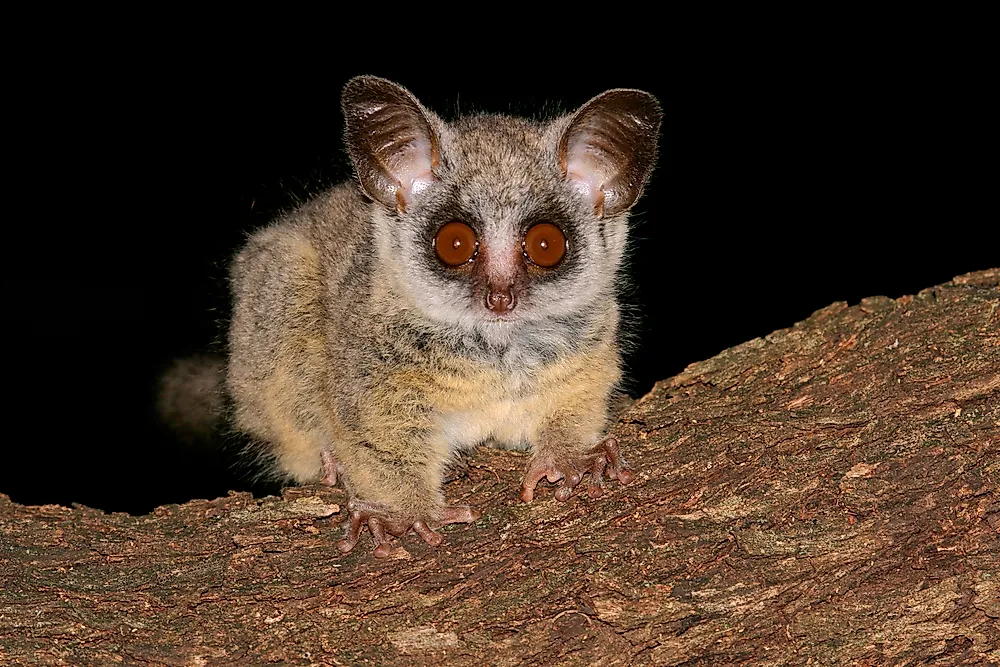Bushbaby Facts - Animals of Africa

A bushbaby, also known as galago, is a small nocturnal African primate from the Galagidae family. The primate ranges from dark-brown to silver-grey in color. Bushbabies have big eyes that do not rotate in the sockets. They are primitive primates and close relatives of Lemurs from Madagascar. Bushbabies are the most successful primates on Africa continent, both in abundance and variety. This is according to a research conducted by the African Wildlife Foundation.
There are several varieties of bushbabies, such as the Brown greater galago (Otolemur crassicaudatus) and Garnett’s galago (Otolemur garnettii). Bushbabies are vocal animals despite their small size. The name bushbaby originates from the loud calls similar to a child’s cry or its appearance. They make calls ranging from crackles, grunts, and clicks. Bushbabies also bear an African name ‘’nagapie’’ because of surfacing at night. In Ghana, they are called ‘’aposor’’ because of holding firmly on tree branches.
Unique Characteristics
Bushbabies have strong back legs, sharp hearing, long tails for balance, and big eyes for good night vision. They are also agile and quick animals in movement. Bushbabies have nails on most of their fingers except on the second toe of the back legs, which has a Grooming claw.
Bushbabies communicate using their urine to mark the paths and calling each other. They can land on the same branch by following the urine smell. These animals make loud calls that have different meanings. Bush babies make a special rallying sound at night in order to assemble in a tree hole, nest, or branches to sleep.
Bush babies also exhibit exemplary abilities in jumping. Reports published by Royal Society indicated that, bushbabies could jump 2.25 meters. This is due to the fact that, bush babies’ leg muscles amount to 25% of their body weights. Therefore, they jump nine times more than frogs.
Habitat
Bushbabies inhabit savanna, woodlands, forests, and thickets. Females maintain homes, which they share with their offspring. On the other hand, males evacuate their mother’s homes at puberty. Mature males make separate homes that overlap with those of females.
Diet
Bush babies have incisors teeth like a comb. This makes them feed on mixed diet ranging from fruits, small animals, tree gums, and various insects.
Reproduction
Male Bushbabies assess their female counterpart heat signs by sniffing the genitals. Males engage in a serious fight in which the winner mates with the female. The female opposes the male’s first approach. When she gives in the second time, mating goes on for five minutes repeatedly after every two hours. Gestation period in bushbabies takes 110 to 133 days, where young ones are born with eyes half closed.
Behavior
Bushbabies’ social structure is composed of both solitary and social life. While playing, bushbabies climb high on trees or swing on branches. Types of play include play-grooming, following-play, and play fights. Young bushbabies are always in close contact with their mothers while old ones rest alone in groups.
Bushbabies also do auto grooming. They do it after rest, before rest, or during rest. Grooming is an important stage of galago’s life. Male bushbabies are the one charged with the responsibility of social grooming. However, females always turn down efforts made by males to groom them.











